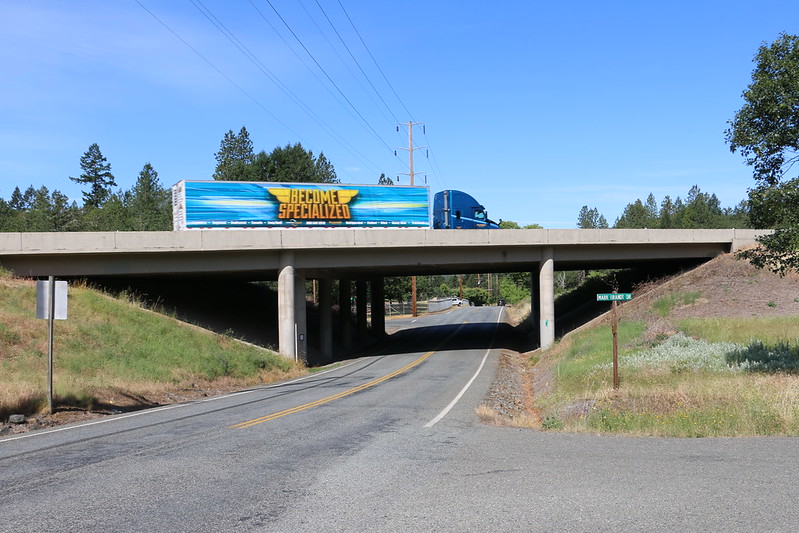The Oregon Department of Transportation contractor has officially started work on a series of “bridge bundles” associated with the Southern Oregon Seismic Resiliency project.
[Photo courtesy of the Oregon Department of Transportation.]
That three-year-long, $45 million project – funded by the 2017 Keep Oregon Moving legislative package – seeks to rebuild or reinforce 17 bridges and seven slopes that could be affected by the Cascadia Subduction Earthquake Zone.
The agency noted in a statement that the first “bridge bundle” being addressed within this project is an effort to strengthen Interstate 5 Exit 80 bridges near Glendale. Other bridges in this first $12.7 million “bundle” include the I-5 Exit 58 north Grants Pass interchange bridges and the nearby I-5 Hillcrest Road Bridge near milepost 57.5.
In a November 2020 blog post, the Oregon DOT noted that experts say there is a one-in-three chance a Cascadia Subduction Zone earthquake could occur within the next 50 years. The concern is that a major earthquake would isolate much of that region due to bridge damage or outright destruction, with landslides triggered by an earthquake blocking key roadways.

Thus the idea behind the Southern Oregon Seismic Resiliency project is to “armor” key southern Oregon bridges and hillside slopes before a big earthquake strikes.
“The idea is to prepare now so the area can get back on its feet as quickly as possible, to get the region reconnected to the outside world,” explained Chris Hunter, Oregon DOT’s project manager. “How can we act strategically now to improve key bridges and known problem slopes to keep critical, life-saving goods flowing into and out of the region?“
He said Oregon DOT crews have prioritized or evaluated the most vulnerable bridges and slopes to keep the Rogue Valley connected along the I-5 corridor to Eugene and the Willamette Valley, as well as from the Rogue Valley east to the U.S. 97 corridor over Oregon 140. The plan is to quickly clear some kind of roadway connection – in the days and weeks after a subduction zone quake – even if it is a single lane or two. By keeping that connection, critical supplies can get into and out of the area, Hunter noted.

